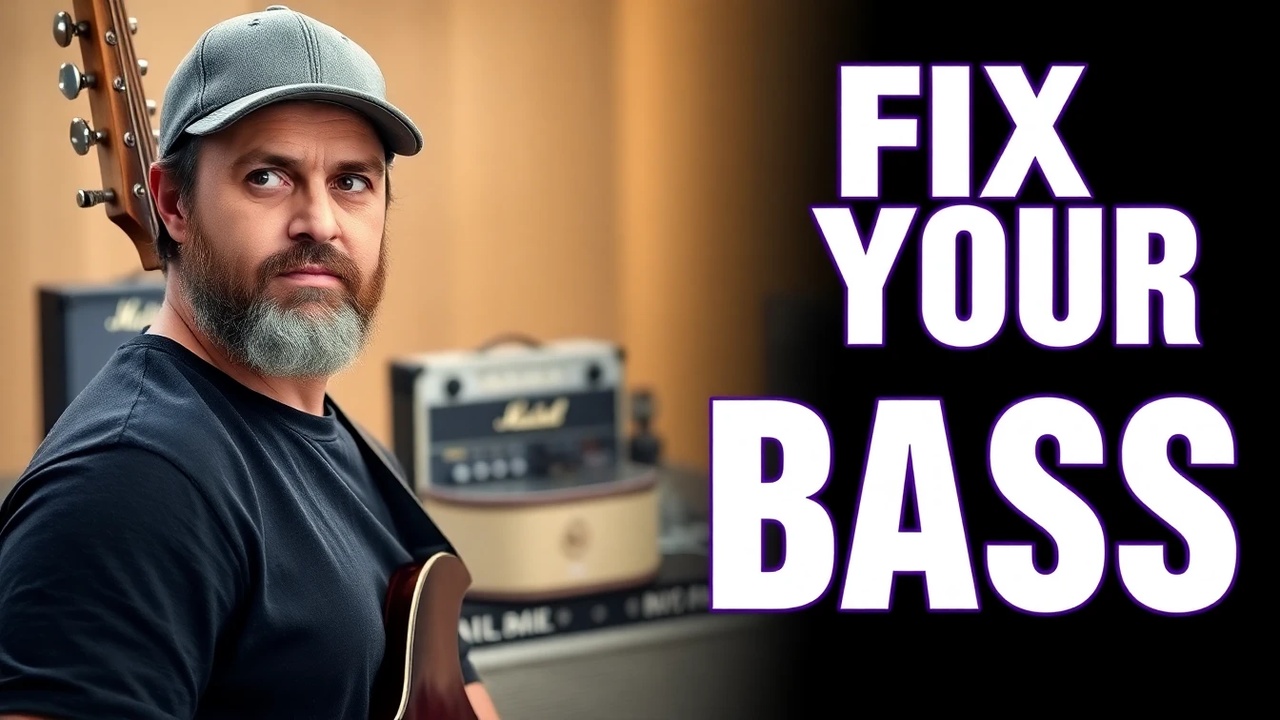The Best Beginner’s Guide to Mastering Your Bass Tone. Simple, proven methods will help you get the most out of your bass guitar. This guide will help you make a clear, strong tone that stands out in any mix, whether you’re just starting out or trying to find your sound.
Table of Contents
What does bass tone mean?
Your bottom tone is more than just a sound; it’s what makes you who you are as a musician. It affects how your instrument works with drums, guitars, and vocals, and it also defines your role in any band or album. When you know how bass tone works, you can make smarter choices about your gear and how you play.
Typically, the ideal range for bass clarity lies between 80 and 250 Hz, spanning from 40 Hz to 400 Hz. Too much energy in this area could make the sound muddy and indistinct.
Step 1: Learn how to use your EQ settings.
Many beginners think that turning up the bass knob will make the tone better. But when you raise all the lows, the sound typically becomes “boomy” and muddy, which makes it difficult to tell what it is.
Tip: Cut before you boost.
Consider reducing the number of issues rather than increasing them. If your bass sounds boxy or muffled around 150 Hz, for instance, lower it by a few dB. This approach gives other instruments room to play while letting your bass notes shine out.
Add Presence Where It Matters
Increase the high mids (1.5 to 3 kHz) a little to assist your bass in penetrating the mix without sounding harsh.
Give this a shot: Play a simple bass sound and experiment with cutting frequencies between 150 and 250 Hz, then adding a mild boost near 2 kHz. Take note of how your tone opens up and becomes clearer.
Step 2: Getting Your Bass Ready for Success
No matter how good the equalizer is, it can’t fix a bad instrument arrangement. To get the right tone and playability, the strings need to be at the right height, the neck needs to be relieved, and the intonation needs to be right.
At the 12th fret, the string height (action) should be about 5/64 inch (2mm). Playing is hard, and the notes are feeble when the strings are too high. When they are too low, they buzz.
Neck Relief: A small bend in the neck (approximately 0.3 mm) stops fret chatter and keeps the action comfortable.
Intonation: Adjusting the bridge saddles keeps your bass in tune across the fretboard.
Need help? Many music businesses have reasonable professional setups, which are well worth the money for improved quality and playability.
Step 3: Create Tone-Shaping Technique.
Your hands are the most effective tone tools. The way and location you pluck the strings has a significant impact on your sound.
Plucking near the bridge creates a bright, defined tone that is ideal for funk and slap styles.
Pluck near the neck to produce a warm, rounded sound—ideal for jazz and mellow grooves.
To achieve a smooth, constant strike, alternate between your index and middle fingers. Don’t rely solely on your thumb.
Relaxation: Keep your wrists and shoulders relaxed to prevent tension from dulling your tone.
Practice tip: Focus on finger placement and relaxation while playing a simple groove. Take note of how your tone varies with each modification.
Troubleshooting Your Bass Tone: Problem and Possible Causes Quick fix.
Muddy or boomy sound Excess low and mid frequencies Reduce 150-250 Hz by 3 decibels.
Fret buzz Low-string height or neck alleviation Raise action or modify the truss rod
Weak or dull attack Do not pluck too softly or close to the neck. Pluck closer to the bridge, increasing attack.
The volume is inconsistent. The finger technique is not uniform. Use a metronome at a slow pace.
Great bass tone is a journey, not a destination. Begin by making one modification at a time, whether it’s tweaking your EQ, setting up your bass, or improving your technique. Take notes on what works and what does not, and pay close attention to your development.
